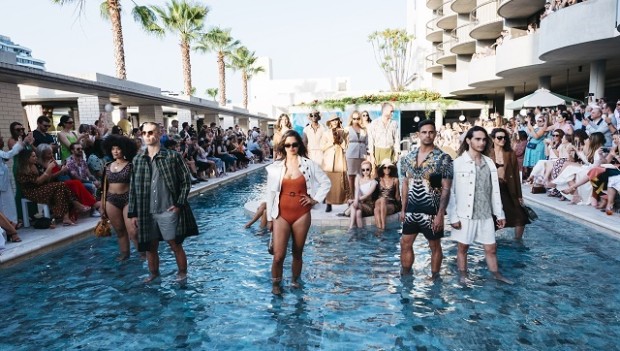With an adjusted EBITDA of €9.5 million in the June quarter, The Iconic’s parent company Global Fashion Group is one retailer that is set to grow off the back of changing consumer behaviours. As retailers around the globe have begun revealing their results from the last quarter, it’s clear that 2020 is the year of e-commerce, and Global Fashion Group’s recent figures are no exception. GFG, which is listed on the Frankfurt Stock Exchange and follows the European reporting cale
ng calendar, posted an adjusted EBITDA of €9.5 million in the June quarter. Net merchandise value went up 22.8 per cent to €448.3 million, and revenue went up 11.3 per cent to €336.1 million. However, one-off payments and costs relating to the business’ IPO launch dragged adjusted EBITDA for the half to a loss of €13.2 million.
GFG co-CEO Patrick Schmidt admits that the past few months have been tough for the company, which has been forced to adapt quickly and move some plans ahead by several years.
“Underneath all those numbers lies a lot of volatility. We had a really steep drop-off in demand in March and leading into April, just as the whole world went into lockdown and it felt a bit like the world was ending. But we had a big recovery starting in April and then May and June,” Schmidt told Inside Retail.
“If you just look at the headline numbers, it looks like an easy quarter, but it was certainly volatile and a quarter where we had a lot of challenges – sending our people home, keeping people safe – but the team has pulled together and the results are that it’s a safe workplace but we’ve also had really good financials.”
The group operates online fashion marketplaces The Iconic in Australia, Zalora in Southeast Asia, Dafiti in Brazil and Lamoda in Russia.
Launch of lockdown categories
According to GFG, the strength of its results was partly due to the accelerated rollout of categories in the past few months to meet consumer demand.
During the peak of the pandemic, Zalora quickly launched an essentials category, as consumers found it difficult to safely leave the house to buy hygiene products and basic grocery items.
“I’m usually based in Malaysia and when lockdown was announced, everyone was shopping – not so much for toilet paper like in Australia – but pasta, hand sanitiser, face masks. It was quite chaotic. It was really hard to get your hands on these products, but because we have a good sourcing office in China for those particular products, we launched an essential category,” explained Schmidt.
“The team launched it within less than a week, which was really impressive. Consumers really demanded it.”
Meanwhile, The Iconic had planned to enter beauty in a couple of years’ time; instead, it launched into the market just a few weeks ago.
“We’ll definitely continue our pivot into lockdown categories. It’s not completed yet and consumers are still shifting. We’re still learning what’s trending and what’s not,” said Schmidt.
E-commerce in the future
Given consumers’ new reliance on online retail around the world, Schmidt is particularly excited about the prospect of e-commerce growth in GFG’s markets, which are generally around 10 to 15 years behind other countries, such as China, where penetration is more than 30 per cent.
“The penetration of e-commerce within fashion in our markets is only about 6 per cent, which is very low, and that’s the average across all our markets – it’s a bit lower in Indonesia, a bit higher in Australia. That’s pre-pandemic,” he said.
“We don’t have the latest numbers now that we’re mid-pandemic, but it’s obviously [more] than 6 per cent and the potential for that number to [grow] in our markets is really high.”
This story appears in the August 26, 2020, issue of Inside Retail Weekly.

